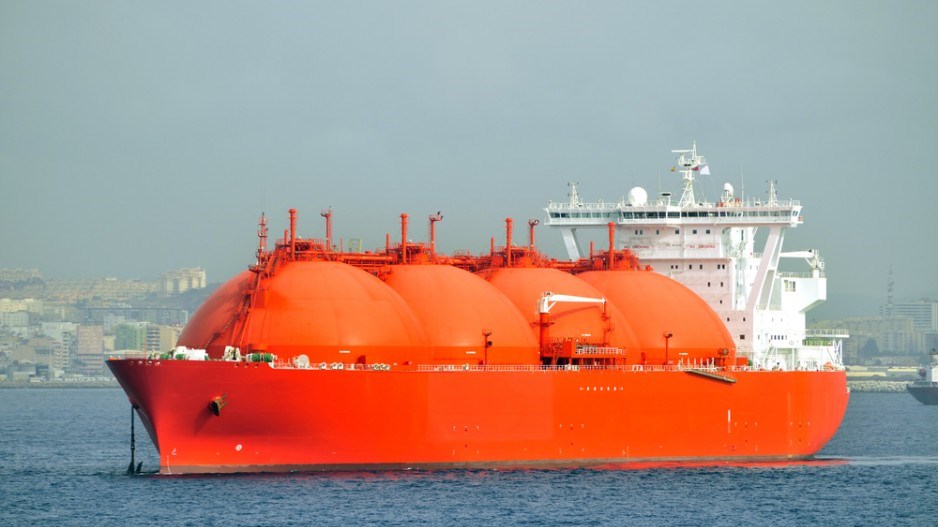Alberta-based Triton LNG Limited Partnership's proposed Kitimat LNG plant is expected to include a floating liquefaction storage and offloading (FLSO) vessel, with two liquefaction trains, according to the Daily Oil Bulletin.
As reported in the Daily Oil Bulletin, the group applied to the National Energy Board on Tuesday for a licence to export LNG off the British Columbia coast. The term of the licence will be 25 years starting on the date of first export of LNG under the licence. Subject to the annual tolerance, the quantity of LNG that may be exported in any 12-month period will not exceed 2.3 million tonnes, which is the approximate natural gas equivalent of 115 billion cubic feet.
The point of export of LNG from Canada will be at the outlet of the loading arm of the natural gas liquefaction facility located near either Kitimat or Prince Rupert, British Columbia.
Triton LNG LP is a partnership formed under the laws of Alberta and registered to do business in British Columbia, the export filing stated. The general partner of Triton LNG LP is Triton LNG Inc. The limited partner of Triton LNG LP is AltaGas Idemitsu Joint Venture Limited Partnership (AltaGas Idemitsu LP). AltaGas Pacific Partnership and Idemitsu Canada Corporation each own a 50% interest in AltaGas Idemitsu LP.
AltaGas Pacific Partnership is a subsidiary of AltaGas Ltd., which is a diversified energy infrastructure business with a focus on natural gas, power and regulated utilities and an enterprise value of approximately $7.5 billion.
Idemitsu Canada Corporation is a subsidiary of Idemitsu Kosan Co., Ltd., which is Japan's second-largest petroleum company with consolidated net sales (2012) of approximately $47 billion. Its primary businesses include refining, manufacturing and sale of petroleum, lubricants and petrochemical products, the filing stated.
Triton LNG LP is preparing preliminary engineering designs for the construction of liquefaction facilities and has identified potential site locations in the vicinity of Kitimat and Prince Rupert. The LNG facilities are expected to include:
- an FLSO vessel with two liquefaction trains and storage of up to 200,000 cubic metres of LNG;
- a marine berth and related bulkhead, dock and mooring infrastructure to support long-term docking of the FLSO vessel and temporary docking of LNG carriers; and
- shore-side facilities, including power supply, condensate storage, water supply and return, cooling water system, feed gas pipeline and metering and support buildings.
It is anticipated that the FLSO vessel will have an annual production capacity of approximately 2.3 million tonnes per annum of LNG and will require roughly 325 million cubic feet (mmcf) per day of feed gas, inclusive of process fuel. The LNG production will be offloaded from the FLSO vessel through a loading arm to LNG carriers for transport to export markets.
Triton LNG LP is currently developing the project feasibility study, which is expected to be completed in 2014. Subject to the completion of the feasibility study, consultations with First Nations, permitting, regulatory approvals and facility construction, the proposed LNG exports could begin as early as 2017. Triton LNG LP is now in discussions with supply and market participants to develop commercial supply and offtake agreements.
The feed gas for the Triton LNG project will be transported on the system of Westcoast Energy Inc., carrying on business as Spectra Energy Transmission, to the interconnect with the Pacific Northern Gas Ltd. (PNG) system. Triton LNG LP has signed a 20-year Transportation Reservation Agreement with PNG for 325 mmcf per day of natural gas transportation capacity related to the PNG expansion.
The British Columbia Environmental Assessment Office has issued an order accepting PNG's expansion project into the environmental assessment process, the filing stated.
The feed gas for the Triton LNG project will be supplied from the Western Canadian Sedimentary Basin and will be secured through a mixture of gas purchase contracts made directly with other resource holders and supply through transactions made at market hubs. It is anticipated that the LNG facility will be connected by pipeline systems to the principal market hubs, including AECO/NIT and Station 2, where large volumes of natural gas are traded and market prices are established through trading.




